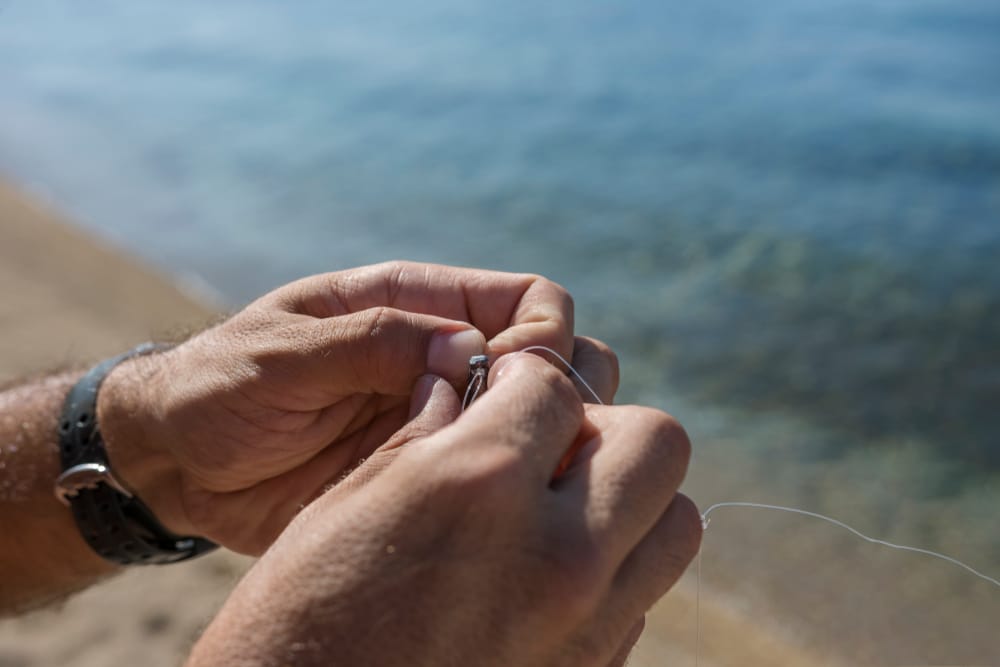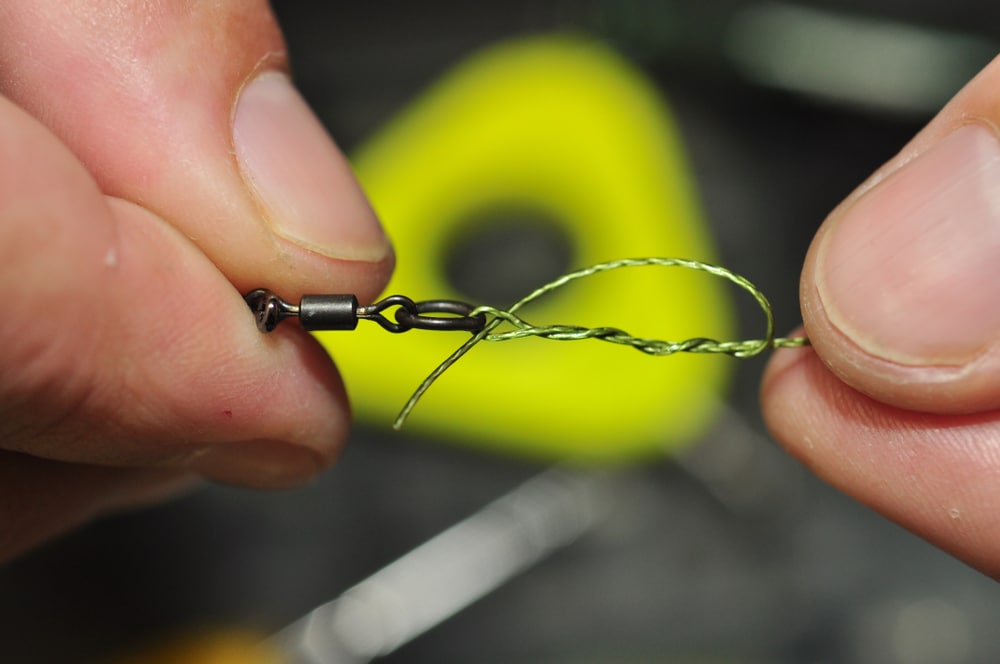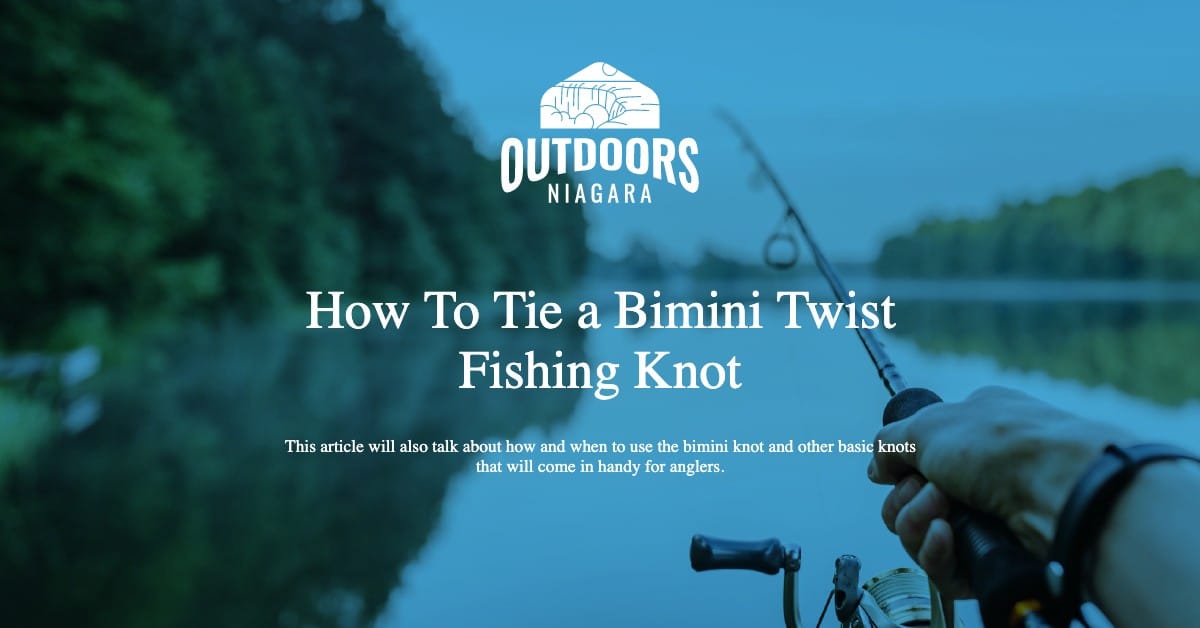With so many popular knots available for fishermen, we have decided to show you how to do more involved ones.
One is the versatile bimini twist, which anglers can use for various applications around the fishing environment.
Fishing knots have been around for many years and are carried over from generation to generation by millions of fishing experts.
This article will also talk about how and when to use the bimini knot and other basic knots.
If you are interested, learn the knot details of the bimini knot and other knot options available to fishermen.

Contents
Steps To Tie the Bimini Twist Knot
This step by step instructions will provide you with the correct steps to master the bimini twist knot to do it like commercial knot makers.
- Start by doubling about 1 to 2 feet of the end of the line by folding it back to form a large loop.
- Place one hand inside the loop while holding the lines with the other hand.
- Start twisting it 20 to 25 times, the same way you twist a standard fishing knot or hitch knot.
- When you are done, put the loop on any fixed object. When around the fishing waters, the reel handle will suffice.
- While maintaining tension on both sides of the loop you created, grab the two lines above the column of twists.
- Pull the lines gently and slowly to force the twists downwards into a tighter column.
- One should hold the mainline at slightly more than a 90-degree angle while the tag is pulled away from it and downwards.
- You will see that the bimini loops are getting more compacted as you pull down.
- When the twists are compacted in one area, take your forefinger and press up from the bottom of the twisted column.
- This movement will compress the twists upwards and make the column compact and smaller.
- At the same time, you should lessen the tension on the tagline a bit while pushing the column upwards.
- This will do a doubling up of every bimini twist loop, and you should keep doing it until you can’t do it anymore.
- When you can’t compact the column of twists anymore, take the tension off the mainline.
- Grab everything with the thumb and forefinger to keep the column in place.
- Take the tag line and make a hitch loop by folding it over the leg of the large loop closest to you.
- Then push the end of the tag through the loop you just created with it and pull it to the top.
- Complete the same steps with the tag on the other leg of the loop furthest away from you and pull it tight upwards.
- The final step is to make a double hitch knot around both legs of the large loop simultaneously.
- A double hitch knot means forming the loop twice with the tag, pushing it through the loop, and pulling it up.
- Cut the tag to about a quarter of an inch.
- Now you can attach any other knot to the large loop of the bimini twist knot.
Here is a video with steps to show you all the instructions you just went through to see how you do.

Benefits Of a Bimini Twist Knot
There are several benefits to using a bimini twist knot while you are out on the fishing waters.
- It can provide elasticity to any leader line.
- The bimini twist knot is solid and durable.
- Anglers can use it effectively with both braided and monofilament lines.
- With a high breaking strength, it is very reliable.
- This knot is excellent for joining gel spun backing on a fly line.
- It will also efficiently run through the holes of the guides on any fishing rod.
How And When To Use a Bimini Knot
This type of knot is considered a 100 percent knot, which means that it will retain its strength when tied correctly. A bimini twist knot can be used when fishing offshore to create a double section of a single min line.
Anglers can then use it to tie other leader lines to it for many different fishing applications. You can also use the bimini twist knot to join the backing of a fly line with a loop-to-loop connection.
This versatile knot will come in very handy when it comes to big game fishing, such as ulua and others. If you want to create a double line in a Yucatan knot, you can get it done using the bimini twist knot.
When you want to combine braid and mono line, it can form part of the GT connection and provide you with a durable option. With the bimini twist knot, you can join a barrel or a snap swivel to form a strong connection.
Different Types Of Fishing Knots
There are many different fishing knots available for the anglers out there, which were invented through the ages. It is essential to know all you can about these different knots and how to use them around the fishing waters.
This is a list of the most common types of knots that fishermen use.
The Clinch Knot
When you need to tie a hook to your line, this is the most useful knot to secure it.
The Palomar Knot
The knot is also used to tie the hook to the line and works great with braided and single lines.
The Blood Knot
To join two pieces of line together, you will use this type of knot to get the job done.
The Double Surgeon’s Loop
When you need to have a loop at the end of a line, you will need the double surgeon’s knot to accomplish that.
If you want to know more about all the types of knots and when to use them, look here.
Summary
It might seem challenging to create the bimini twist knot at first, but anyone can master it with practice. Now that you know almost everything about this fishing knot, nothing can stop you from a happy fishing adventure!







